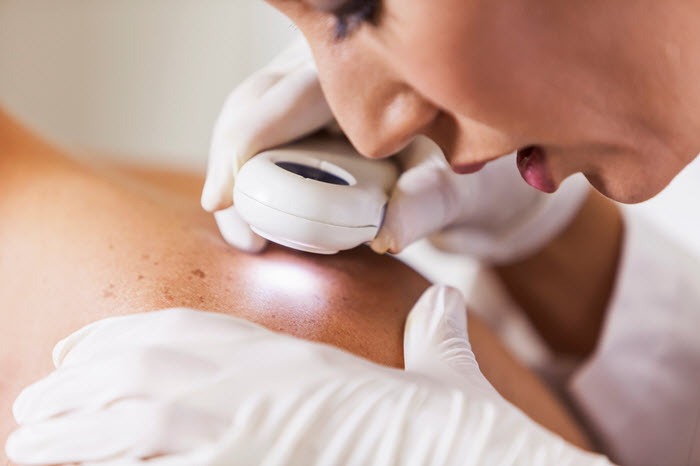
Skin Cancer
Diagnosis and Treatment
Melanoma
Early melanomas are usually treated surgically. Later stages may require more extensive surgery which may include surgical removal of affected lymph nodes. If the melanoma has spread beyond the skin, immunotherapy, chemotherapy or radiotherapy may be used.

For more information on melanoma and its treatment see Cancer Research UK
Non melanoma skin cancer (NMSC)
Treatments for non-melanoma skin cancer include surgical removal, freezing (cryotherapy), anti-cancer creams, radiotherapy and a form of light treatment called photodynamic therapy (PDT). The treatment used will depend on the type, size and location of the non-melanoma skin cancer you have.
Treatment for non-melanoma skin cancer is usually successful as, unlike most other types of cancer, there’s a considerably lower risk that the cancer will spread to other parts of the body.
For more information on NMSC and its treatment see Cancer Research UK

CARE IN THE SUN
RISK FACTORS
Anyone can develop skin cancer, whatever their skin colour. However, certain skin types are more at risk from the effects of UV radiation than others.
SKIN PROTECTION
Too much ultraviolet (UV) light, either from natural sunlight or from artificial sources such as sunbeds, is the main cause of 80% of skin cancers.
SUNBEDS
Sunbeds, tanning booths and sun lamps give out ultraviolet (UV) rays that can damage your skin and can make it look wrinkled, older or leathery.

